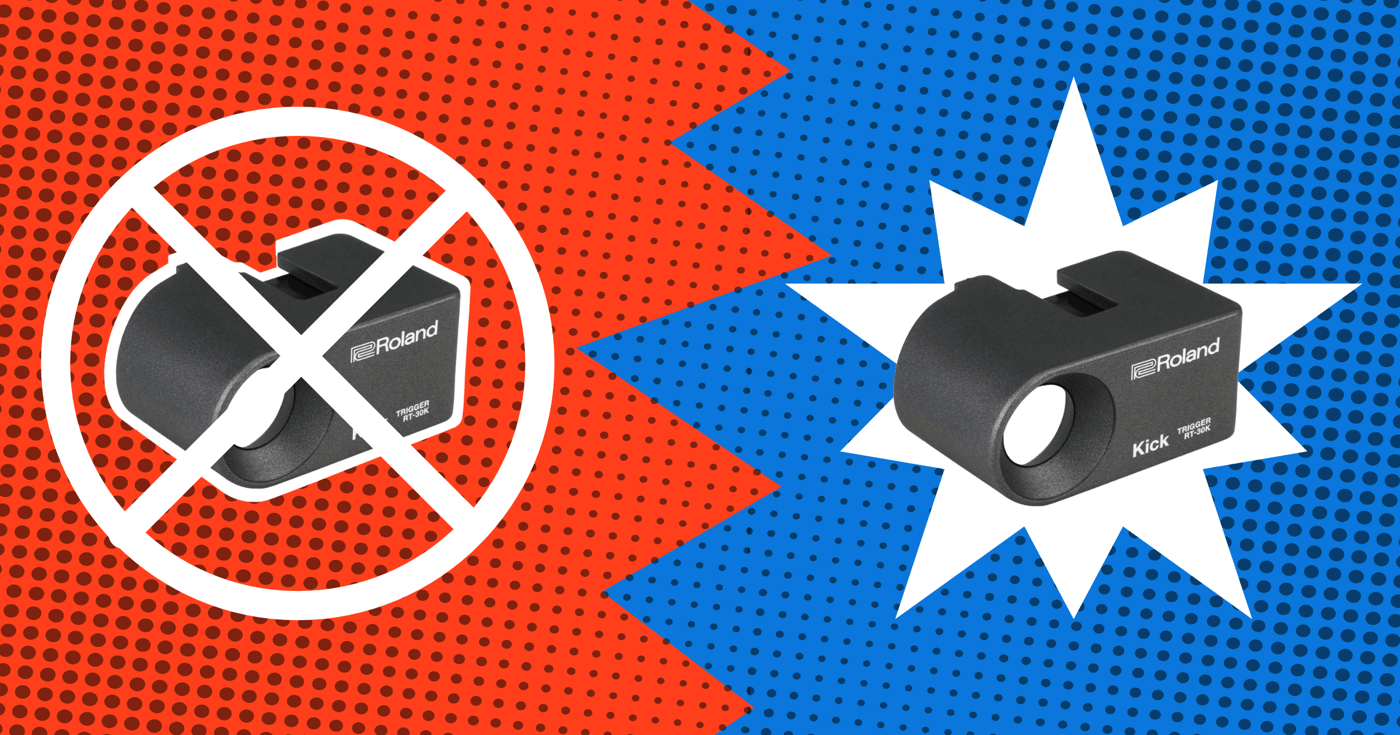
We all know that person who won’t hesitate to proudly announce that “triggers are cheating”, and beneath someone like themselves who plays “real” drums. Maybe you’ve encountered this person side-stage at a show, glaring at the drummer with crossed arms becoming increasingly disgruntled by each passing note: “It sounds like a machine! It’s the only way they can play that fast!”
This disgruntling generally seems to be the case when our anti-triggerist can play at a certain level achieved through hard work. This person then sees someone playing lightly with triggers in a way that is beyond what they can do with their skillset, and then proceeds to go on about how “triggers are cheating”, and that’s the only way the drummer on stage was able to play that way. This is merely a petty jab that comes from insecurity.
While triggers are tools that can be used to make acoustically unrealistic things happen, is that really so bad? The fact of the matter is simple: triggers are a tool that creates midi data from vibrations and that’s it. How one uses triggers and the resulting midi data is entirely up to the person.
Let’s look a little deeper into some of the more nuanced ways to use these tools.
If you’re playing live and only sending electronic sounds to the front of house, you can use drum sounds or anything you want this way! One thing that’s nice about this approach is that you can entirely change your drum sounds for what the song needs at the click of a button. Better yet, if you’re running a DAW (Digital Audio Workstation), you can automate changes in the same way that guitar players can automate their patch switches, alleviating their need for pedalboards live.
This is when you take a blend of acoustic and electronic sounds for clarity or presence, usually with a similar-sounding drum or even a studio recording of the same drum. Microphones can pick up a lot of bleed from other sound sources, whereas samples are clear. Triggers, in this sense, can reduce unwanted noise levels and lead to a cleaner live sound.
This is my favorite way to use triggers: adding different sounds to your drums! You can do this with totally alien sounds, or percussion, or you can simply add ambiance. In my studio, I like to play a pair of snares to my left: a 10×7 Sonor SQ2 Acrylic tuned tightly beside a 16×10 VK Aluminum tuned extremely low with loose wires. When I rimshot the 10″, the 16” adds a dark sizzle underneath, which is something I’d never be able to create live acoustically. With triggers, I can sample the underside microphone from the 16” and blend in as much as I want, electronically, without any bleed!
You can use triggers to record a MIDI performance into your DAW, which can be a great way to do demo drum recording if you don’t have studio gear. There’s no rule confining that MIDI drum data to drums, either! Try copying your kick line into a guitar, bass, or synth instrument, and you immediately have music to complement your drums! You can even auto-snap the notes to melodic scales you want to work within.
MIDI can even be used to control non-audio devices. For example, DrumLites can be set to flash whenever you hit a drum. Or you can set MIDI data to control stage lights!
Whether you’re using triggers to create the acoustically impossible, control lighting, or simply add some punch to your live drum sound, the devices themselves are innocent! They’re just another tool available for musicians to use creatively.
So quit your whining and go be creative! 😉
*This article contains affiliate links, which means we might earn a small commission from the product seller if you make a purchase. For more info, check out our privacy page.
Aaron Edgar is a dynamic and innovative drummer renowned for his technical prowess and creative approach. With a career spanning over a quarter century, he has significantly impacted the drumming community as an educator, performer, and author. His work with the progressive metal band Third Ion showcases his ability to blend intricate rhythms with powerful grooves. Aaron's contributions to drumming education are extensive, including over a dozen years at Drumeo, his role as a columnist for Modern Drummer, and his instructional book "Progressive Drumming Essentials" Additionally, he served as Editor In Chief of Drums Etc. magazine and is a sought-after clinician worldwide. Aaron's passion and dedication continue to inspire drummers of all levels, solidifying his place as a leading figure in modern drumming.


By signing up you’ll also receive our ongoing free lessons and special offers. Don’t worry, we value your privacy and you can unsubscribe at any time.
We use cookies for traffic data and advertising. Cookie Policy »